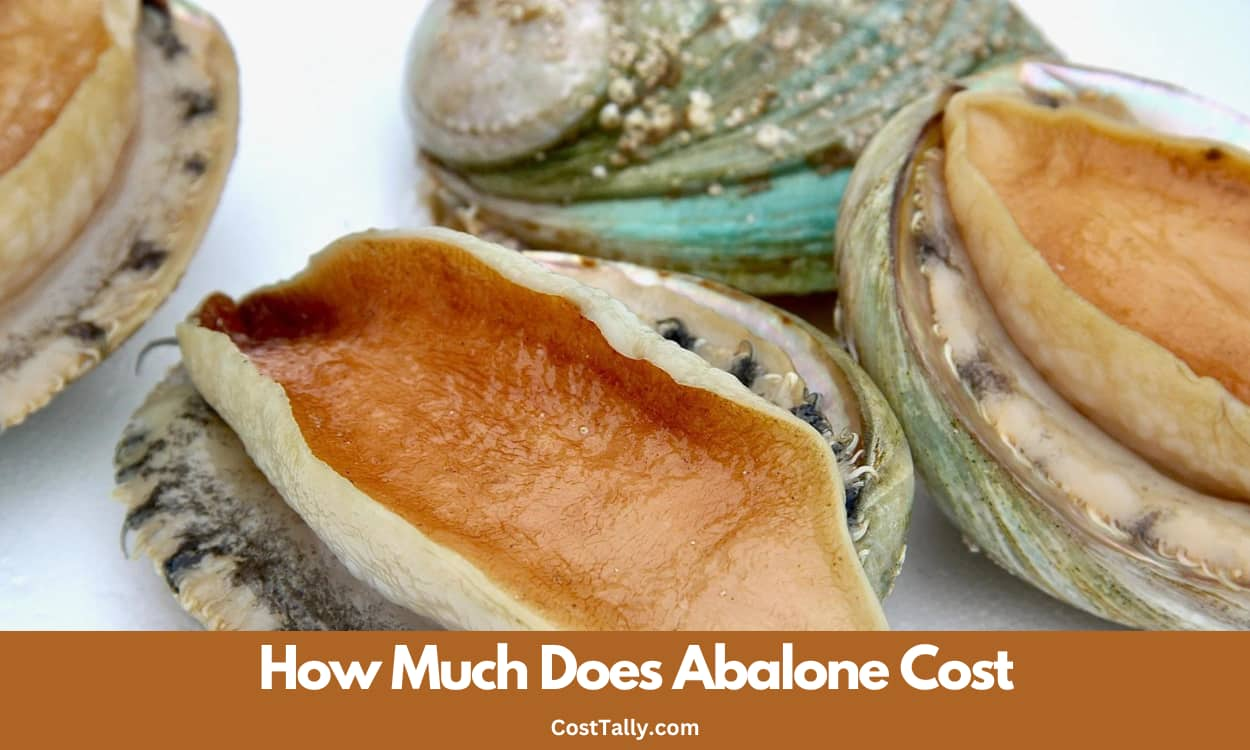Have you ever heard of abalone? This unique sea snail is considered a true delicacy in the culinary world. Its distinctive flavor and texture have made it a favorite among seafood lovers and top chefs alike.
But with such high demand, you might be wondering: just how much does abalone cost?
In this article, we’ll explore the ins and outs of abalone pricing. From the different species to seasonal changes and geographic factors, we’ll cover all the key things that determine how much you’ll pay for this prized mollusk.
So let’s dive in and learn more about the fascinating world of abalone!
How Much Does Abalone Cost?

The price of abalone can vary quite a bit depending on the type. Here’s a quick breakdown of the most common varieties and their typical cost per pound:
| Species | Price Range per Pound |
|---|---|
| Red Abalone | $30 – $50 |
| Green Abalone | $15 – $25 |
| Black Abalone | $50 – $100 |
As you can see, red abalone tends to be the most expensive, followed by the rare black abalone. Green abalone is usually the most affordable.
Overall, you can expect to pay anywhere from $15 to $100 per pound for abalone, depending on factors like species, size, and origin.
We’ll explain more about those factors next.
Does Geography Affect Abalone Prices?
Absolutely! Where the abalone comes from plays a big role in its price tag. Abalone from certain areas is more desirable and therefore more expensive.
- California and Mexico: Abalone from these regions is often considered top quality. The clean waters lead to great flavor. Strict regulations also limit supply. Expect to pay over $40 per pound.
- South Africa and Australia: These countries have big abalone farms, so the supply is higher and prices are lower. You might pay $15 to $25 per pound.
So in general, abalone from the US and Mexico will cost you more than options from other parts of the world. It all comes down to supply, demand, and reputation.
Will Seasonal Changes Cost You More or Less?
You bet they will! Like a lot of seafood, the price of abalone changes with the seasons.
During peak harvest times when supply is high, you’ll see prices drop. We’re talking under $20 per pound sometimes. Score!
But in the off-season or if bad weather impacts the harvest, prices can shoot up to $50 or more per pound. That’s the scarcity effect in action.
This seasonal shift is most dramatic for wild-caught abalone. Farmed abalone has a steadier supply and price throughout the year, usually around $25 to $35 per pound. But even farmed abalone will still have some seasonal ups and downs.
Does the Size of the Abalone Matter for Price?
Yes, size matters when it comes to abalone cost! Bigger abalone commands higher prices for a few reasons:
- Larger abalone has a richer, more intense flavor
- The texture is firmer and meatier
- They’re seen as more of a delicacy and better for special occasions
Abalone that weighs over a pound can easily cost $40 to $60 per pound. Restaurants and connoisseurs will pay top dollar for these big boys.
Smaller abalone under a pound is more affordable, often in the $20 to $35 per pound range. They’re a great option for the average person who wants a taste of luxury.
So if you’re on a budget, stick to those petite abalones under a pound. But if you’re looking to truly indulge or impress dinner guests, spring for the jumbos!
Wild-Caught vs. Farmed: What’s the Price Difference?
Another key factor in abalone pricing is how it was sourced. Was it caught in the wild or raised on an abalone farm? Let’s compare:
Wild-Caught Abalone:
- Prized for its natural flavor
- Harder to find due to scarcity and regulations
- Prices range from $40 to $80 per pound
Farm-Raised Abalone:
- More readily available and sustainably produced
- Milder flavor than wild-caught
- Usually costs between $25 and $45 per pound
As you can see, wild abalone is pricier than the farmed variety. That premium price reflects the rarity and flavor.
But farmed abalone is nothing to scoff at! It’s still delicious, much easier to find, and easier on the wallet. The price gap between wild and farmed can vary a lot by region too.
From Ocean to Table: Abalone’s Wholesale to Retail Journey
To understand abalone pricing, let’s follow its journey from wholesale to retail. There’s quite a difference between the two!
Wholesale abalone pricing is all about the costs of:
- Harvesting
- Processing
- Transportation
At this stage, abalone usually costs $15 to $30 per pound when bought in bulk by restaurants and seafood markets.
But once it hits the retail market, all sorts of extra costs get added in:
- Overhead for the store
- Marketing
- Profit margin
This explains why you might see abalone for $40 to $90 per pound or more at a specialty store or fancy restaurant. That’s double or triple the wholesale cost!
As a consumer, you’re paying for more than just the abalone itself. You’re covering all the extra expenses involved in getting that delicacy to your plate.
Buying Guide: Tips for Choosing the Best Abalone
With so many options and a big range in prices, abalone shopping can seem overwhelming. But don’t worry! Here are some tips to get the best bang for your buck:
- Know what to look for in terms of quality:
- Vibrant color
- Firm texture
- Fresh ocean smell (not fishy)
- Compare prices from different sources, both online and in stores
- Consider frozen or dried abalone for a cheaper option (as low as $10-$20 per pound)
- Start with smaller abalone if you’re on a budget
- Support ethical and sustainable suppliers, even if it costs a bit more
If you keep these guidelines in mind, you’ll be able to confidently choose an abalone that fits your needs and budget. Don’t be afraid to ask questions and do some research before buying.
The Importance of Sustainability
With such a high demand for abalone, overfishing has become a big problem in some areas. Some species are even endangered now.
That’s why it’s so important to be a responsible consumer and support sustainable fishing practices. Many countries now have rules in place to protect abalone, like:
- Strict limits on how much can be harvested
- Seasonal closures
- Minimum size requirements
Farming has also helped reduce the strain on wild abalone populations while still meeting the demand for this delicacy.
But the high prices have led to a lot of illegal poaching too. This black market trade hurts conservation efforts.
So what can you do? Seek out abalone from reputable sources that follow all the regulations. Choose farmed options for a more sustainable alternative. And be willing to pay a little extra for abalone from suppliers who put the environment first.
Final Thoughts:
So there you have it – the complete lowdown on abalone pricing! We’ve covered everything from species and size to sourcing and sustainability.
The biggest takeaways? Abalone is pricy for a reason. Factors like limited supply, harvesting challenges, and high global demand all drive up the cost.
You can expect to pay anywhere from $20 to over $100 per pound, depending on the type and where it’s from. But for seafood lovers, that price is worth it for the incredible flavor and delicacy.
If you’re looking to try abalone, go in with a flexible budget. Start small and work your way up to the bigger, rarer options. And always make sure you’re buying from an ethical supplier.
With some smart shopping and a willingness to splurge a little, you can enjoy the unique luxury of abalone. Trust us, your taste buds will thank you!
Frequently Asked Questions
- Can you get abalone in the US?
Yes, you can! Abalone is found off the west coast, especially near California. But overfishing has made it pretty rare and heavily regulated. Most of the US abalone supply now comes from farms.
- How many pieces of abalone are in a pound?
It depends on the size. A pound of small abalone might have 8 to 20 pieces. But for big abalone, you may only get 2 to 4 pieces per pound. Abalone is usually sold by weight, not by the piece.
- Is abalone worth the money?
For many seafood lovers, absolutely! Abalone is prized for its unique flavor, texture, and rarity. It’s considered a true delicacy, which is why it commands such high prices. Whether it’s “worth it” really comes down to your personal taste and budget.



